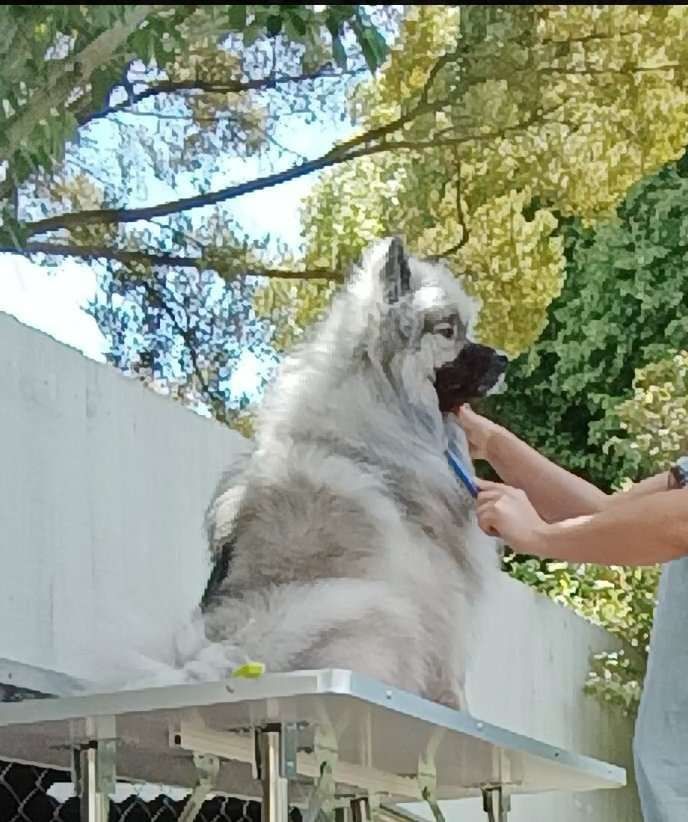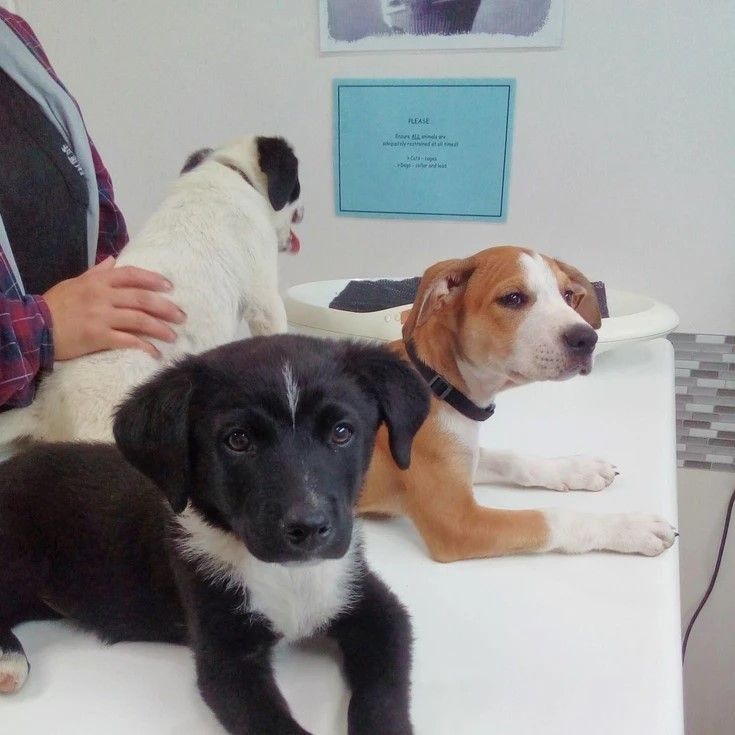Week 2 Resources
This week we are working on the foundations of loose leash walking, recall, & handling. Some of you will also be starting the 'stay' cue! At least 5 minutes of practice 3xdaily is important for making progress!
Loose Leash Walking
To recap, it’s important to start this training in an easy environment - at home! A ‘boring’ area is the easiest place to start, so there are less distractions and they can focus on the task at hand. Think of it as taking piano lessons before a recital. When you're at the point of mastering the property, it can be a good idea to next start practicing in a very quiet park without triggers, and do so after they’ve had a sniff around to maximize the chances of success. If your puppy is struggling and you're unsure of what to do, let me know so we can troubleshoot.
Having a Y-shaped back clip harness is the safer and more comfortable option for your puppy. Collars are only somewhat safe if we are walking a dog that never pulls on the lead regardless of the environment or distractions, which is a big ask for most dogs.
Pair your harness with a leash that allows your puppy to sniff the ground. To maximize sniffing on a short leash, 1.5 metres MINIMUM is recommended.
Video Demonstration: Puppies Practicing in Class
Please note, that technically the pups are absolutely allowed to be sniffing around while walking. Sometimes we will need to call them in for a heel, however most of the time it's just about keeping that lead loose and staying connected while you navigate the world together. There is no need for them to look up whole time, only when the walker stops.
When our default eye contact exercise is going well, we can start to introduce the new rule - follow me! We move together, and we get a nice ‘check in’ behaviour when we stop together so we have an opportunity to give them guidance about our next move.
To teach this:
Start with practicing your eye contact exercise. You want to wait - yes - and reward 5 consecutive eye contacts from your puppy before moving on.
The next time they give you eye contact, instead of saying ‘yes’ you will instead say your ‘let’s go!’, tap your leg, and take a step forward.
Wait for your puppy to move next to you and give you eye contact. If they did not move when you stepped forward, continue to tap your leg to give them some encouragement. Sometimes tapping closer to the ground, or even wiggling your fingers at the floor, can get them moving. We want to encourage them with our movement and being inviting - don’t lure them forward with a treat here!
After they move forward, at the moment they give you eye contact, say ‘yes!’ and reward them back in your lead-walking position. If they are struggling to give you eye contact, go back a step to rewarding just the eye contact for now to strengthen that foundational behaviour.
Build up the amount of steps they can do until they can walk around 10 steps with ease - once here, up the distraction by adding another component, like the TV being on if you're working on this in the lounge, or practicing with other family members or friends doing activities nearby.
Mooching: Encouraging Exploration Before Lead Walking is Mastered
Before our puppies are fully lead-trained, after they're safe to head out we can 'mooch' with them in parks on 4-10 metre long leads attached to a harness. Here is Gino demonstrating his lovely mooching skills on a street walk. Note, Gino has undergone lead training and engagement training, starting with puppy classes, and can safely mooch without pulling on as short as a 3 metre lead. We will work on long-lead handling and encouraging calmness at a later session.
If your puppy gets to where they want to go by pulling, we are teaching them that pulling on the lead is how they get around the world. We are rewarding the pulling when it leads to them getting where they want to go - they are not intentionally being 'naughty'.
Acclimation to different environments and providing frustration-free exploration, all while facilitating positive and calm associations with what they're observing, are key. While it might sound counter-intuitive, giving your puppy more freedom (safely) to explore through the use of a long line can increase their willingness to engage with you!
Recall & Engagement: Touch!
The touch cue is a wonderful tool for establishing recall and engagement in a variety of environments while maintaining a fun and positive response - 90% of the time, it's just a game! We start really easy, gradually build distance, and then introduce distractions.
Recall & Engagement: 'Reflex to Name'
We need a huge amount of repetitions for our pups to start responding to their name (or another sound, such as 'pup pup') in order to create a reliable cue that gets our pups attention. Repeat this as frequently as possible.
What to do? Have a bunch of treats on you and randomly throughout the day (whatever the pup is doing, standing, laying, sniffing, sleeping, sitting) say their name in a recognizably fun way and within 2 seconds after deliver a treat to their mouth.
Say your reflex word (their name, or another consistent word/phrase).
Give them a treat where they are.
When they're reliably turning towards you when they hear the sound, begin taking a step backwards and reward them towards you.
Continue increasing distance from your puppy.
We do this up to 5 times in a row. Like our other skills, we start really easy, gradually build distance, and then introduce distractions.
Happy Handling
To recap, we want our puppies to associate handling exercises with being relaxed and positive. We can do this by teaching them that when we are doing 'formal' handling with them (e.g., vets or grooming, nail trims etc.), staying still and being touched/handled is great!
It can be best to practice this on a mat or table to begin emulating the kinds of scenarios they will be in at the vets and for grooming.
Tell your puppy where you're going to touch them
To start, you will want to have a treat in one hand, ready to reach to touch the part of their body you're intending to while feeding them from the other hand. This helps build calm associations with handling, without them rehearsing turning around to mouth your hand.
Reach out towards them and touch them. If they flinch/move away, bring your hand back to your lap and make it easier.
Say 'yes' or 'good' while you're touching them (or your hand is near them).
Bring your hand back to your lap, and give them a treat. Easy!
Remember: We don't want our pups to practice mouthing at our hands while we do this. Choose calm times to practice while they're getting the hang of it.
On the right you will see Gino practicing calmness on his grooming table. Dogs who have extensive grooming needs should put lots of time into making the experience as positive and safe as possible for everyone involved.
Shadow, Aria and Ghost are on the vets table, having started handling training in my care to make their first vet trips as relaxed as possible.


Teaching the 'Stay' Cue
Stay simply means stay where you are until I return to you and release you (remember your 'okay' release from last week).
Ask your puppy for a sit, or down cue if they're doing well with it.
Hold your fist closed at your chest and say 'stay'
Wait for 1-2 seconds
Say 'yes' and reward them
Release them with 'okay!' and a sweeping hand gesture. If your pup is still learning the release cue, toss a treat afterwards far enough that your pup needs to get up to get it.
We then build up the amount of time up to 10 seconds. When they can do 10 seconds, start taking a small step to the left/right/away etc., gradually building up the difficulty.
Note: 'Stay' is different to 'wait'. While 'wait' means stay where you are until I release you (wherever I am), such as when you're putting their bowl down, 'stay' means stay put until I return to you and release you. We always return to our pups, so they understand that unless we've come back to them, if they can hear us talking from another room their job is still to stay put.